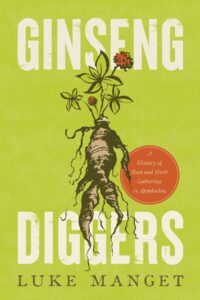NOTE: THIS WEBSITE IS A WORK IN PROGRESS. RESOURCES AND DATA ARE ADDED DAILY.
IMPORTANT: We are in urgent need of funding to keep this project alive and ensure its future. If you’re enjoying the site and see our vision for the project, please consider joining as a paid member or contributing to our crowdfunding campaign today. It is only with your help that we can continue this work.
Thanks so much for your support! – Jes
![]()
Ginseng Diggers: A History of Root and Herb Gathering in Appalachia
share:
Some buttons on this page link to external websites. If you visit one of our affiliate sites and make a purchase, I may receive a small commission at no extra cost to you. More info
- UPDATED: 6.17.2025
- status: in progress
- Occupations, Folk Medicine
- history, culture, root gathering, herb gathering, medicinal plants
author:
Luke Manget
editor:
n/a
publisher:
date:
3.8.2022
ISBN:
9780813183817
pages:
306
notes:
contents:
description:
Following the Civil War, root digging and herb gathering became one of the most important ways landless and smallholding families earned income from the forest commons. This boom influenced class relations, gender roles, forest use, and outside perceptions of Appalachia, and it began a widespread renegotiation of common rights that eventually curtailed access to some plants such as ginseng.
Based on extensive research into the business records of mountain entrepreneurs, country stores, and pharmaceutical companies, Ginseng Diggers: A History of Root and Herb Gathering in Appalachia is the first book to unearth the unique relationship between the Appalachian region and the global trade in medicinal plants. Historian Luke Manget expands our understanding of the gathering commons by exploring how and why Appalachia became the nation's premier purveyor of botanical drugs in the late nineteenth century and how the trade influenced the way human residents of the region interacted with each other and with the forests around them.
places:
flora + fauna:
CMOS:
author-date:

